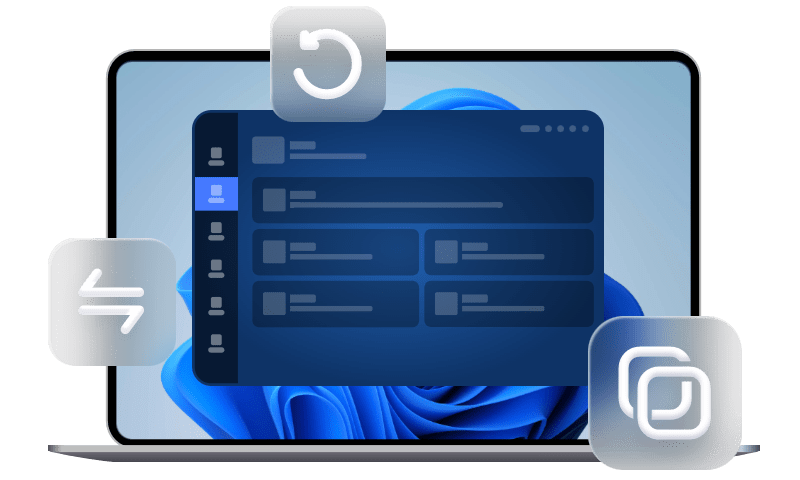How to Transfer Windows 10 License to New Computer Securly
If you've purchased a new computer and don't want to purchase another Windows 10 license, or if you plan to sell your computer and keep the license for reuse (e.g. to activate a virtual machine), you may have the need to migrate your Windows 10 key to another computer.
If you've purchased a new computer and don't want to purchase another Windows 10 license, or if you plan to sell your computer and keep the license for reuse (e.g. to activate a virtual machine), you may need to migrate your Windows 10 key to another computer.
But can you actually do this, and how do you go about making it happen?
How to tell if you can transfer Windows 10 license
Microsoft uses different channels to distribute Windows 10 licenses, the three main ones are Retail, OEM, and Volume. However, consumers can usually only get licenses through two channels, Retail and Original Computer Manufacturer (OEM).
If you buy a retail license of Windows 10 from a local store or online retailer, you will be entitled to transfer the license to another computer. The number of transfers is theoretically unlimited, but if you are upgrading to Windows 10 from a retail copy of Windows 8.1 or Windows 7, then only 1 transfer is possible.
If you have a computer with Windows 10 pre-installed, then you are dealing with an OEM license. This license is tied to the computer's motherboard and can be transferred to another drive with the same hardware, but cannot be used to activate another computer.
In addition, if you are upgrading from Windows 10 Home Edition to Windows 10 Pro and purchase the upgrade through the Microsoft Store, then the license can be transferred to the new computer because the key will be converted to a digital license linked to your Microsoft account.
Volume licenses are distributed in bulk to large organizations and typically it allows a master key to activate any Windows 10 installation within the organization, but cannot be used to activate devices that are not part of the organization.
How to transfer a license to a new PC on Windows 10
To transfer a Windows 10 license to a new PC, simply remove the license from the system and apply the same key on the new computer.
1. Check your license type
Open Start menu, search for “CMD”, right-click on the top result, and select the “Run as administrator” option.
Type the following command and press Enter to check your license type:
The license information will show on the pop-up window.
2. Deactivate the old Windows 10 computer
To remove the license key on Windows 10, type the following command and press Enter.
If you do not see the "Uninstalled product key successfully" message, you may need to run the command several times until the message appears.
Then type the following command to clear the license from the registry and press Enter.
Once you have completed these steps, you will be able to activate the same version of Windows 10 on the new system using the license.
Although the above action will uninstall the key, the process will not remove the activation from the Microsoft server. Instead, the process will prevent the detection of the same key being used in multiple computers, allowing you to reactivate another computer.
If the computer is not connected to the Internet, then there is no need to perform these steps, as you should be able to use the license on the new system without problems.
3. Activating a new Windows 10 computer
After deactivating the previous installation, you can activate the new installation manually using the license.
To activate Windows 10 with a previous key, use the following steps.
1. Open the Start menu, search for CMD, and select the "Run as administrator" command prompt option.
2. Type the following command to reactivate Windows 10 and press Enter.
*Replace "xxxxx-xxxxx-xxxxx-xxxxx-xxxxx-xxxxx" with the product key you want to use to activate Windows 10.
3. Then you can run “slmgr /dli” again to verify activation. If the "License Status" shows "Licensed", then Windows 10 has been successfully activated.
After completing these steps, Windows 10 will be successfully activated in the new installation, which can be viewed via "Settings" > "Update & Security" > "Activation".
If you plan to transfer your existing Windows 10 license to another computer, make sure it matches the version activated by the license. For example, if you remove a Windows 10 Pro key, you can only use it to activate another Windows 10 Pro installation. You cannot use a Pro license to activate a machine running Home Edition, and vice versa.
Transfer Windows 10 to new computer entirely
Some users may want to transfer Windows 10 OS to another computer before transferring the license, in that way, they can keep the same environment without reinstalling OS and applications. Fortunately, there is one professional tool that can help you complete Windows 10 to new computer migration easily.
AOMEI Backupper allows you to move Windows 10 to another PC without reinstalling by using the system clone or disk clone feature. It has a user-friendly interface and every user can easily complete the data migration task. Just download it and follow the steps below.
Professional Windows 10 Migration Software Download
Freely download the Windows 10 migration software to entirely transfer Windows 10 to a new computer without reinstalling.
Step 1. Connect the target disk via a USB-to-SATA cable or external disk enclosure. Install and launch AOMEI Backupper. Go Clone > Disk Clone.
Step 2. Select the source disk that installs the Windows 10 OS and the target disk separately.
Step 3. Preview the operation window and click the Start Clone button to execute.
Wait for the cloning process to complete. Disconnect from the old Windows 10 and connect to the new computer. Change the boot order in BIOS and then you can start the new PC from the cloned drive now.
✍Tips:
- To move only OS to a new PC, please select the system clone option in step 1.
- If you transfer Windows 10 to a computer that has dissimilar hardware, please try the backup and restore method to complete. In that way, AOMEI Backupper offers a Universal Restore option there. To learn more specific information, please refer to Windows 10 system image restore to different computer.
FAQs on Windows 10 license transferring
1. Is there a limit to how many times I can transfer my Windows 10 license?
No, there is no strict limit on how many times you can transfer a Retail license, but repeated transfers could trigger Microsoft's fraud protection systems.
2. What happens to my apps and settings when I transfer a Windows 10 license?
Nothing. The license transfer only affects Windows activation. You will need to reinstall your applications and set up preferences on the new computer separately.
3. Is there a cost associated with transferring a Windows 10 license?
No, transferring a Retail license does not incur any additional cost. Nevertheless, if your current license is OEM or you encounter activation issues that cannot be solved, you may need to purchase a new license.
4. Can I transfer my Windows 10 license to a Mac running Boot Camp?
Yes, you can. The process is the same as transferring to another PC. Ensure the license is only active on one device at a time.
5. Can I transfer my Windows license to a virtual machine (VM)?
Depends. The Retail license can be transferred to a VM, but the OEM licenses cannot since they are tied to the physical hardware of the original computer.
6. What if I'm upgrading my hardware -- do I need to transfer the license?
If you're upgrading major components like the motherboard or CPU, the OEM license may no longer work. Retail licenses can be reactivated on the same PC after hardware upgrades, and you may need to contact Microsoft Support.

